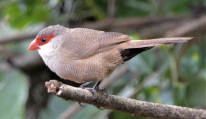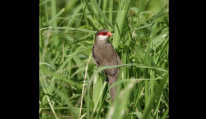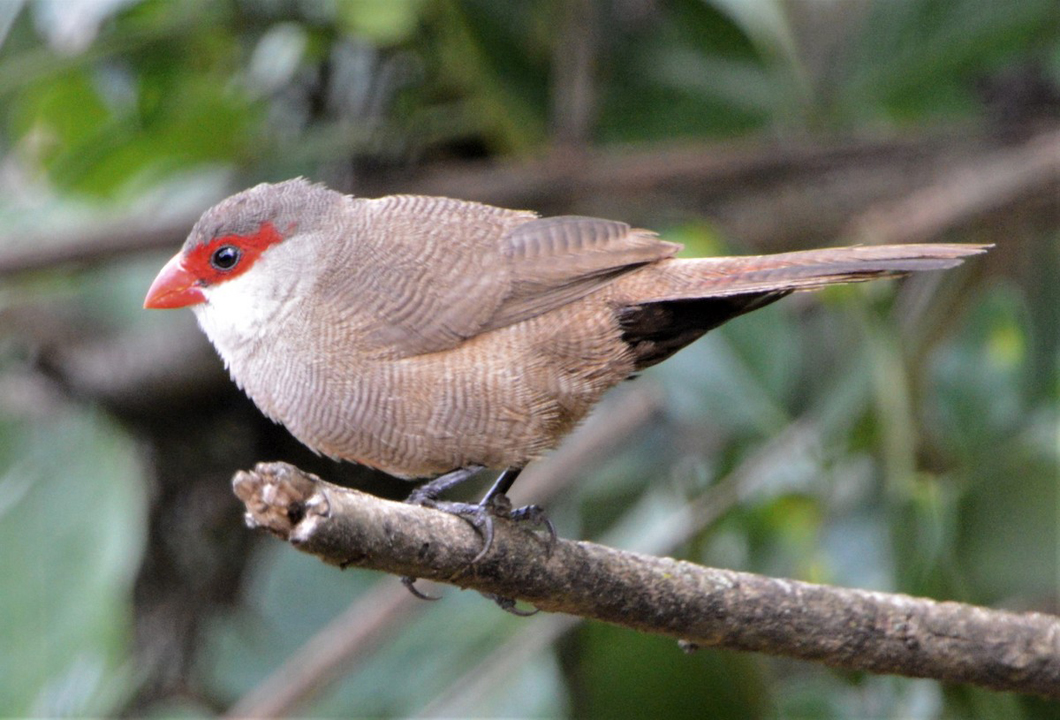Social Structure
Social birds that are active during the day, common waxbills forage in groups that can contain hundreds of birds, and will groom each other, a behavior called allopreening.
Communication
Common waxbills have a distinctive flight call and several other buzzes and tweets, one of which sounds like “ti-cket please!”
Behavior
Common waxbills “curtsy” to each other. They perch on grass stems while eating seeds, and also stay on the ground and step on stems to make feeding easier.
Conservation
Least concern
Diet
Common waxbills primarily eat grass seeds, but will boost their protein intake with ants, termites, and moths, especially when breeding. They also need to drink water, since their seed diets do not provide much moisture.
Breeding
In Kenya, monogamous pairs will sometimes produce two or three broods every year. Nesting in grass clumps or tangled vegetation, they construct a large hollow ball with an added “cock’s nest” on top where the male sleeps. Both parents incubate their eggs and raise the chicks, which are independent around a month after they hatch.
Friends & Foes
Similar to other finches, common waxbills have predators that include birds of prey, mammals, and snakes. Pin-tailed whydahs lay their eggs in common waxbill nests so that the waxbills raise the chicks as their own.
Population in Kenya
Common waxbills are particularly numerous around Lake Victoria. Around 17 subspecies of common waxbills can be found throughout much of sub-Saharan Africa.
Range & Habitat
These birds are found throughout much of Africa, South America, the Caribbean, and elsewhere.
They frequent marshes and other wetlands, tall grasslands, open fields and forests, and cultivated gardens and farms.





